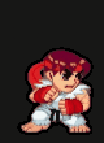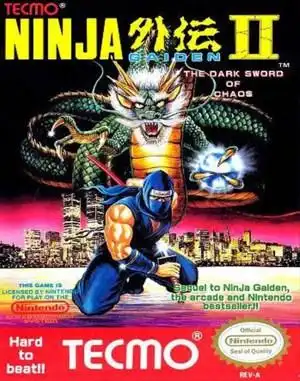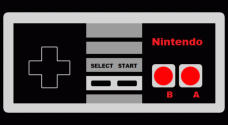Remember the feeling of popping a grey NES cartridge into the console, the satisfying click, and the promise of adventure? For many of us, that adventure involved a certain ninja clad in blue, facing impossible odds. While the original Ninja Gaiden set the standard for tough-as-nails action and cinematic storytelling on the 8-bit console, its sequel, Ninja Gaiden II: The Dark Sword of Chaos, arrived in 1990 promising more of everything we loved – and feared.
But does Ryu Hayabusa's second NES outing still hold a special place in the hearts (and blistered thumbs) of retro gamers today? Let's slice into this classic.
A Sequel That Dared to Improve
Following up a beloved, groundbreaking game is always a challenge. Tecmo didn't just churn out more of the same; they took what worked in the first Ninja Gaiden and refined it, while adding new tricks to Ryu's arsenal and new terrors to his journey.
Sharper Pixels, Better Sound
Visually, Ninja Gaiden II felt like an upgrade. The sprites were detailed, the environments more varied and atmospheric, and the cutscenes, already a highlight of the first game, were even more impressive. The music, while still iconic NES chiptune, felt richer and more dynamic, perfectly complementing the on-screen action and drama.
Level Design Gets Creative
Forget just running left to right. NG2 threw environmental hazards at you like never before. Remember those infamous wind-swept stages that would blow you into pits? Or the dark levels where lightning flashes were your only guide? These weren't just backdrops; they were active threats that forced you to adapt your platforming and combat strategies. It made the world feel more alive, and significantly more dangerous.
The Power of the Shadow Clone
Perhaps the most memorable addition was the Shadow Clone technique. Instead of the powerful diagonal slash from the first game, Ryu could now summon up to two clones that mirrored his movements and attacks. This fundamentally changed combat, turning Ryu into a whirlwind of destruction, especially with certain secondary weapons. Mastering clone positioning became key to quickly dispatching bosses and clearing crowded screens.
Ninpo: A Different Feel
Ninja magic saw some adjustments too. While staples like the Fire Wheel returned (now controllable!), the controversial directional Fireball was added, which felt less useful to many players. The system for magic felt a bit different, perhaps requiring more careful management despite frequent refills, though the sheer power boost from the Shadow Clones often compensated.
The Challenge: Still Kicking Your Butt?
Let's be honest: you don't play Ninja Gaiden for a relaxing time. NG2 is tough. Like, really tough.
Pits and Knockback: The Eternal Struggle
The classic Ninja Gaiden frustration remains: getting hit often sends you flying backward, frequently right into a bottomless pit or environmental hazard. With more enemies on screen and complex platforming, this knockback mechanic is responsible for countless deaths and controllers thrown in frustration. It's a core part of the NG experience, for better or worse.
Bosses: Patterns and Punishment
The boss fights in NG2 are generally considered an improvement over the first game. They're larger, more varied, and have distinct patterns you can learn. But learning them often involves a lot of trial and error, and they still hit hard. Taking down a boss with only your sword and careful dodging after running out of Ninpo is a true retro gaming triumph.
Is it Fairer than NG1?
This is a debate among fans. Some argue that NG2 is less frustrating than the original, pointing to more frequent health pickups and, crucially, not being sent back to the very start of the final stage upon death (a notorious pain point in NG1). Others say the environmental hazards and increased enemy density make it just as, if not more, brutal. Regardless, it demands precision, patience, and practice.
Story and Presentation: The Cinematic Edge
Beyond the gameplay, the Ninja Gaiden series on NES was revolutionary for its use of cutscenes to tell a dramatic story.
Those Incredible Cutscenes
For the time, the cinematic sequences in NG2 were breathtaking. They expanded on the story from the first game, featuring detailed character portraits, dramatic angles, and translating the plot into something that felt more like a movie than a typical 8-bit game narrative. They provided crucial context and motivation for Ryu's relentless quest.
Ryu's Continuing Saga
The story picks up a year after Ryu defeated the Jaquio. Now, he faces Ashtar, a powerful demon seeking to unleash the ancient evil known as the Dark Sword of Chaos. The plot involves familiar faces like Irene Lew and introduces new villains, continuing Ryu's journey through a world steeped in ancient evil and personal destiny. It gave the game a narrative depth uncommon for the era.
Why Many Call It the Trilogy's Peak
While all three NES Ninja Gaiden games are classics, Ninja Gaiden II: The Dark Sword of Chaos is often cited by fans as the best of the bunch.
It takes the solid foundation of the original, improves the presentation, adds exciting new mechanics like the Shadow Clones, refines the level design with memorable environmental challenges, and arguably finds a slightly better balance between punishing difficulty and player progression (though still leaning heavily towards punishing!). It felt like the series hitting its stride.
Playing Today: Experiencing the Chaos Now
Want to revisit the challenge or experience it for the first time? Thankfully, you don't necessarily need original hardware (though that's the purist's route!).
- Official Collections: The game is often included in modern retro collections like the Ninja Gaiden: Master Collection available on platforms like Steam, PlayStation, Xbox, and Switch.
- Emulation: For PC players, emulators can run the original NES ROMs, allowing you to experience the game via software like Mesen or FCEUX. (Remember to only use ROMs you legally own). Sites like Archive.org sometimes host historical software, but official collections are the most straightforward legal way.
Final Thoughts: A Timeless Classic?
Ninja Gaiden II: The Dark Sword of Chaos is more than just a difficult NES game; it's a masterclass in 8-bit action design. It pushed boundaries with its cinematic storytelling, innovative level design, and memorable new mechanics.
Yes, it's hard. Yes, you will die. A lot. But overcoming its challenges, guided by those dramatic cutscenes and powered by your trusty shadow clones, is an incredibly rewarding experience. For anyone who grew up with the NES, or modern gamers looking to understand the roots of challenging action games, Ninja Gaiden II: The Dark Sword of Chaos remains an essential, unforgettable classic.
FAQ
Is Ninja Gaiden II harder than the first Ninja Gaiden?
Many players find Ninja Gaiden II to be slightly less frustrating than the first game, primarily due to more frequent health pickups and a less punishing death penalty on the final stage. However, the introduction of environmental hazards and increased enemy density still makes it an incredibly challenging experience.
Why is Ninja Gaiden II considered the best in the NES trilogy by some fans?
Fans often cite NG2's improved graphics and sound, more creative level design (especially environmental hazards), the impactful addition of the Shadow Clones, and its balance between difficulty and player progression as reasons why it stands out as the peak of the NES trilogy.
Can I play Ninja Gaiden II: The Dark Sword of Chaos on modern consoles?
Yes, Ninja Gaiden II: The Dark Sword of Chaos is included in the Ninja Gaiden: Master Collection, which is available on modern platforms like PlayStation, Xbox, Nintendo Switch, and PC (via Steam).


